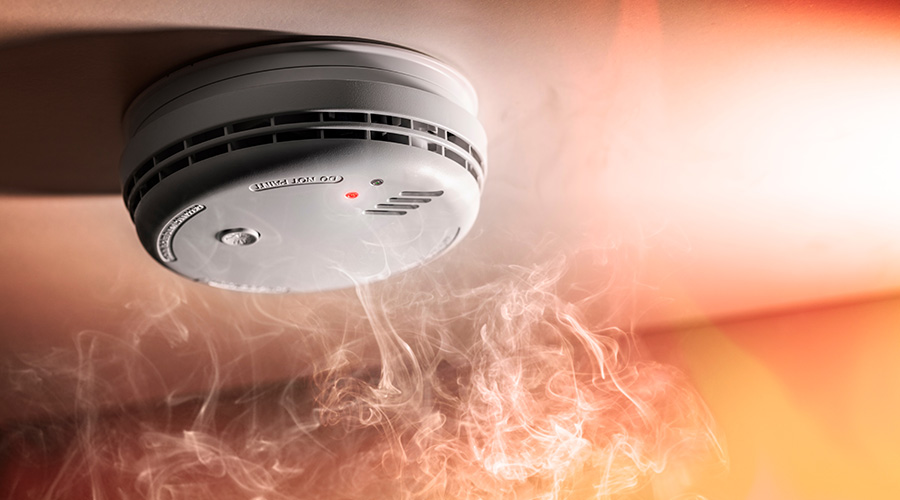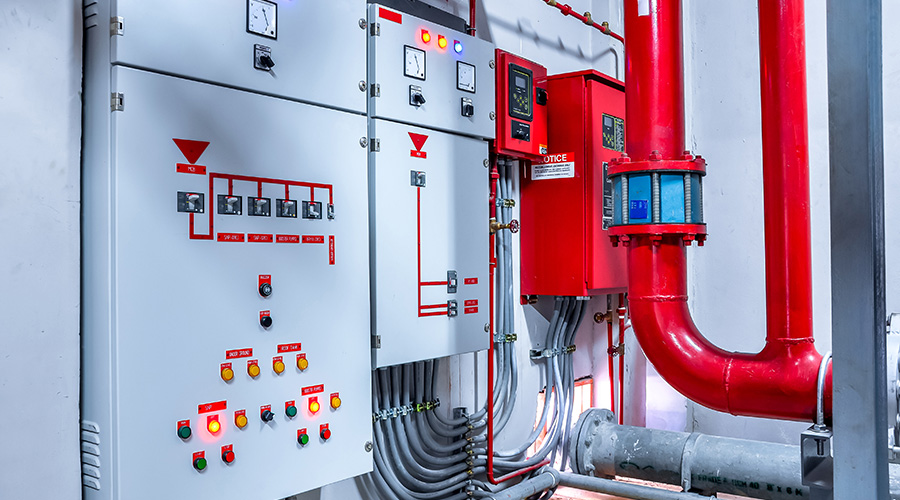Facility Professionals Advised to Have Fire Emergency Plan in Place
It's a facility manager's worst nightmare: There's a fire and not everyone evacuates the building. For whatever reason, some people have decided to stay behind. Once they start smelling smoke, they realize they should have gotten out already, but by then it may already be too late.
Why do people sometimes ignore a fire alarm — or worse, not even realize what it is? There are numerous reasons, but luckily most of them can be avoided if facility managers take a responsible and diligent approach to fire and life safety. That means resisting the temptation to procrastinate.
Facility managers are used to being pulled in many different directions, and most are well aware of how an "urgent" matter one day can be pushed down the to-do list when something more pressing pops up. Pushing fire and life safety matters down the priority list is easy to do, but the consequences of doing so may be much worse than putting off repairing that ceiling grid. Staying on top of fire safety should be one of a facility manager's top priorities.
Start with a Plan
The No. 1 responsibility for facility managers when it comes to fire and life safety is establishing and implementing a sound emergency plan for the organization, says Chris Jelenewicz, engineering program manager for the Society of Fire Protection Engineers. Facilities should have plans in place in the event of numerous different emergencies, from a suddenly ill employee to an electrical fire.
To compile a fire emergency plan, facility managers should weigh all aspects of the specific facility, as no two facilities are alike. "It's really about assessing and balancing occupant needs against staff abilities to assist, supplemented by fixed fire safety systems and features," says Ron Coté, principal life safety engineer, National Fire Protection Association (NFPA). Buildings that have two stairwells next to each other will have completely different fire evacuation procedures than buildings that have stairwells separated from each other, he says. Facility managers should look to local fire codes, building codes, local fire departments or fire marshals and NFPA for advice or examples of sound fire emergency plans for similar building types.
Once a plan is in place, experts warn against letting it collect dust on a shelf. Space use changes, occupant needs change and even walls may change. Forgetting to update the fire emergency plan to reflect any changes could spell disaster. Coté uses an example of a multitenant office building. "A tenant might talk the facility manager into cutting off a corridor. But he failed to realize that the exit stairwell is now within that tenant's space and is inaccessible to another tenant. They've lost an exit," he says. "That should never have been approved." If a facility manager simply checks the fire emergency plan before making design changes, potentially serious problems can be avoided.
Making space plan changes is a good time for all facility managers to double check local jurisdiction fire codes to ensure compliance. Most jurisdictions adopt a specific edition of a model code or standard, such as NFPA. NFPA updates and revises its codes and standards every three to five years. According to Coté, most jurisdictions adopt a specific NFPA code, then write a few amendments if necessary. Coté warns, however, against blindly following local code if it's extremely outdated. He urges facility managers to look into implementing a more recent version of NFPA code if the local jurisdiction only mandates NFPA 1991, for example. "Facility managers should provide the level of safety the public expects when entering a building, regardless of how outdated the regulations being enforced in the jurisdiction are," says Coté.
REMEMBER
Fire Safety Dos and Don'ts |
|
Do
- Create a fire safety plan
- Stay up to date with code
- Train staff and occupants
- Test and maintain systems
- Hire an expert if needed
|
Don't
- Forget to update the plan
- Accept old versions of code
- Trust human nature
- Fail to document testing
- Neglect fire safety in lieu of other FM duties
|
Related Topics:












